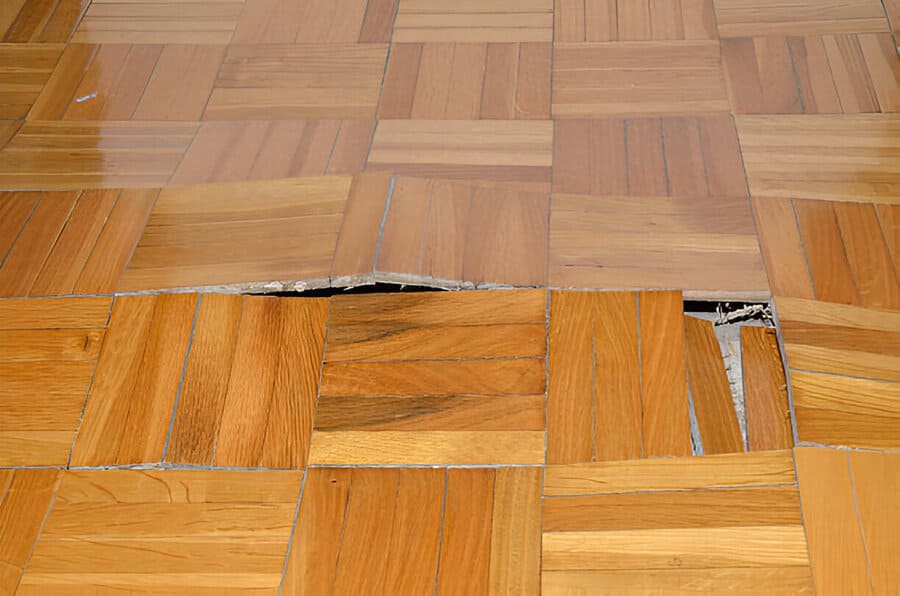How to Save Damaged Parquet After Moving to a New Home
The beauty and uniqueness of a wooden parquet floor brings character and warmth to any home. However, its splendor often comes hand in hand with fragility. Even with the best of intentions, the hustle and bustle of relocating furniture, boxes, and other items comes with its fair share of hurdles.
Understanding Parquet Damage Types
- Surface Scratches: These are shallow marks on the wood surface that only affect the top coat. They show as faint lines glowing in the light
- Deep Scratches: Darker lines that are the result of deeper cuts in the surface varnish and, in some circumstances, penetrating the wood
- Scuff Marks: These are usually dark streaks from rubber soles or furniture legs that have been dragged across the floor
- Dents: Marks made by static weight that net created by dropping items or placing them on the floor
- Water Damage: Soaking leading to swelling, damage to polish leading to discoloration or peeling due to unattended clean up spills during moving
Everything occurs for a reason—and in this case, there is good news. It is possible to remove surface scuff marks without professional assistance, though deep set restorations are easier with expertise.
Quick Fixes for Minor Scratches and Scuffs
The dark marks left by shoes and furniture lifting can be removed effectively with the following:
Removing Scuff Marks
Those dark rubber marks from moving furniture or movers’ shoes can look permanent, but they’re often just surface transfers that can be removed with:
- Scuff Mark Remover with a Tennis Ball: To get rid of wax residue, scuffed shoes, and other scrapes, rub a tennis ball against the area with firm physical pressure
- Baking Soda Paste: Combine water with baking soda to form a paste. Apply it gently onto the mark using a soft cloth and circular motions. Afterward, rinse off the residue using a damp cloth and pat dry
- WD 40 solution: For the most resilient marks, soak a cloth and rub it on the stubborn area. Apply sparingly though. Rub softly, and wash with a floor wood cleaner afterward to get rid of any leftover WD-40
Addressing Surface Scratches
For those bothersome light scratches that only become visible at certain angles:
- Wood Markers and Crayons: They can be filled in by directly applying color to the scratch with markers and crayons which come in different shades of wood. Remove excess color using a soft cloth
- Walnut Trick: Rub the walnut meat over the scratch. This is a timeless remedy that does wonders. The natural oils from walnut blended with many wood tones balance the scratch quite well
- Commercial Scratch Concealers: Products such as Weiman Wood Repair System or Old English Scratch Cover are created specifically for concealing scratches on wooden surfaces
Addressing Deeper Damage
For more substantial damage that goes beyond the surface:
Deep Scratch Repair
- Clean the Area: Before commencing any repairs, clean the scratched area with a cloth to remove any dirt that interferes with the repair work
- Wood Filler Application: Get a wood filler the same color as your floor. Using a putty knife, apply the filler into the scratch, slightly above the surface with the filler
- Sand Smooth: After it has dried, sand the area with fine sandpaper (220 grit) until even with the surrounding floor
- Finish Matching: If needed, apply wood stain first then follow it up with a polyurethane finish that matches your floor’s existing finish (matte, satin, or glossy)
Dealing with Dents
- Steam Strategy: For dents that are not too deep, gently put a warm iron on a damp cloth placed over the dent. The steam usually works to restore the compressed wood fibers to their original position
- Wood Filler Method: For dents where the wood fibers are broken, use the same procedure as for deep scratches
Prevention for the Future
Now that you’ve addressed the damage, let’s talk about preventing future issues:
- Protection from scratches can be avoided by attaching felt pads to the bottom of all furniture legs and applying furniture pads
- Putting rugs in high-traffic areas and placing them under heavy furniture helps distribute weight and preserves the flooring underneath
- No-shoes policies should be adopted for high heels and heavy boots with hard soles
- A good quality wood floor polish should be applied at least every few months to maintain the protective finish of your parquet flooring
The Professional Advantage: How Quality Movers Prevent Floor Damage
Although we have discussed several different techniques for repairs, the most critical factor, which serves as the backbone of all repairs, is having a good moving strategy. A well-equipped professional moving company that understands how to protect hardwood and parquet floors is an investment that can save you a lot of time, money, and stress in repairs.
Professional movers use specialized equipment designed for floor protection, such as:
- Furniture dollies with non-marking rubber wheels
- Runners, masonite boards, and door jamb protectors
- Furniture blankets and detailed wrapping to avoid dragging
- Dragging items requires minimal lifting and carrying trained methods
Equipped with industrial sanding machines and professional moving services, skilled wood floor refinishers can also intricately match the hues and patterns of wood with skill and knowledge.
Maintenance Tips to Keep Your Restored Parquet Beautiful
Once you’ve repaired your parquet flooring, maintain its beauty with these simple practices:
- Clean Regularly: Sweeping and vacuuming using a soft bristle vacuum head should be done often so that dirt and grit do not accumulate and damage the shiny surface
- Damp, Not Wet: Floor mopping should be done with a specially designed wood cleaner and a barely damp mop. Never drown the parquet in water
- Humidity Control: Maintain wood indoors at 35-55% relative humidity to avoid expanding or contracting which can create gaps or buckling
- Finish Reapplication: Maintenance coats of finish should be applied every few years before the wood is worn down too much
Conclusion
Always remember that the best repair to any damage done is prevention. For future furniture rearrangements or moves, use appropriate floor protection and lifting methods, or better yet, call experts specialized in flooring moves. With adequate care and maintenance, your newly restored parquet floors will be a marvelous feature of your house for years to come.

